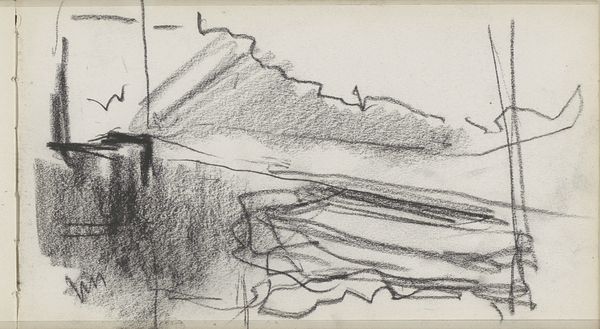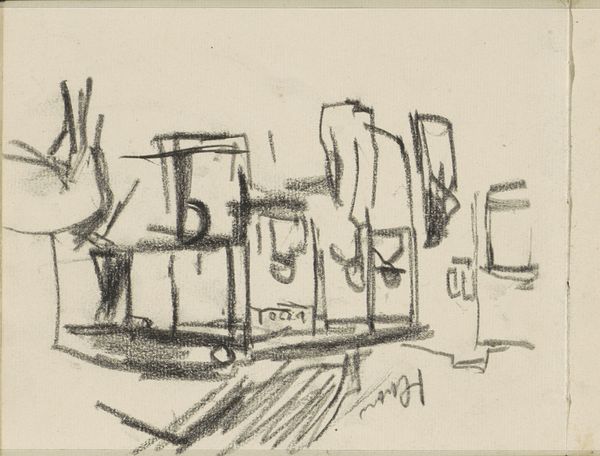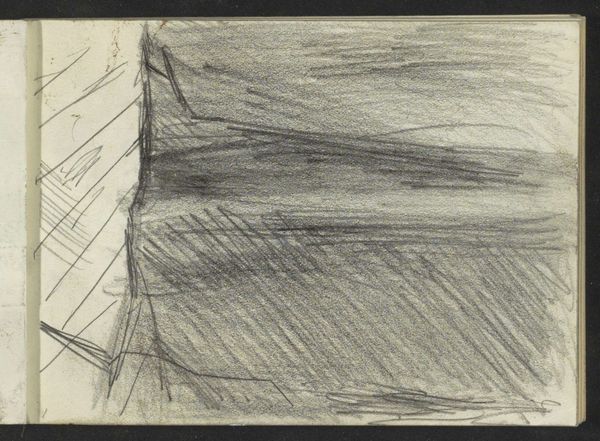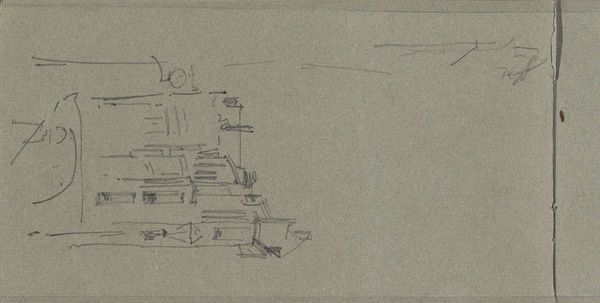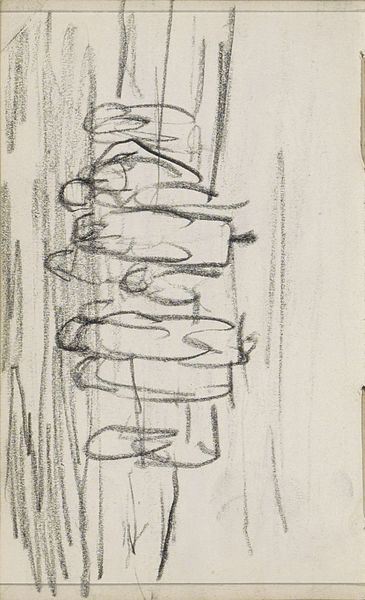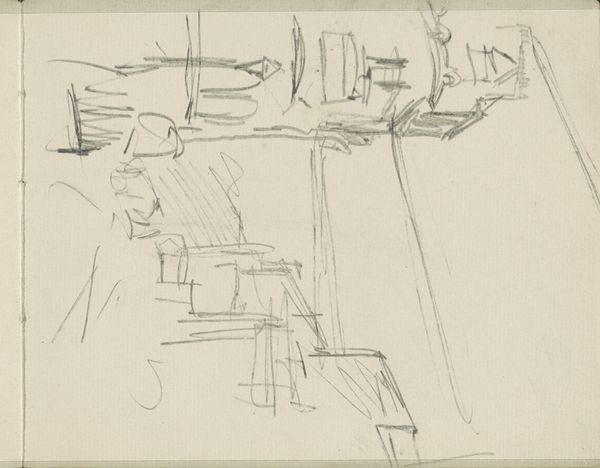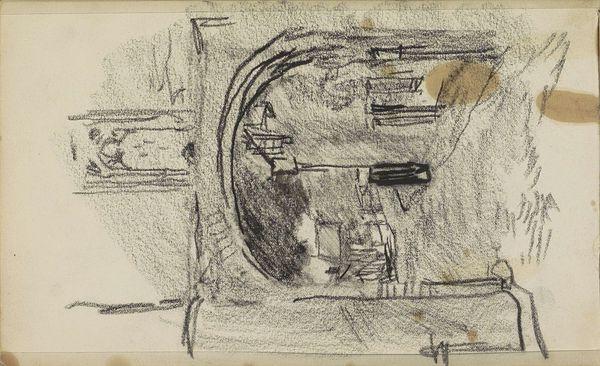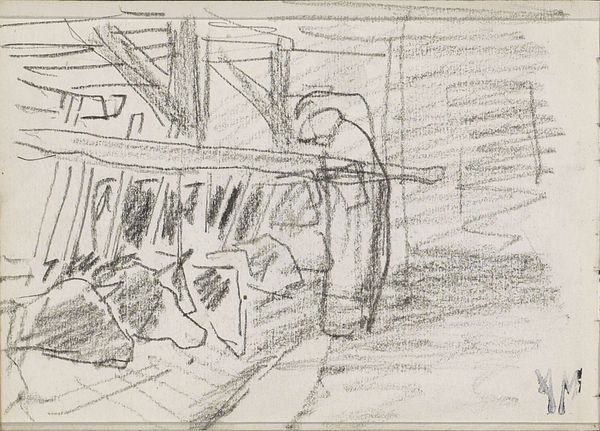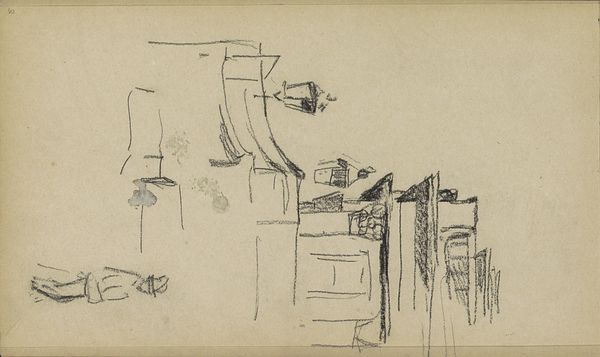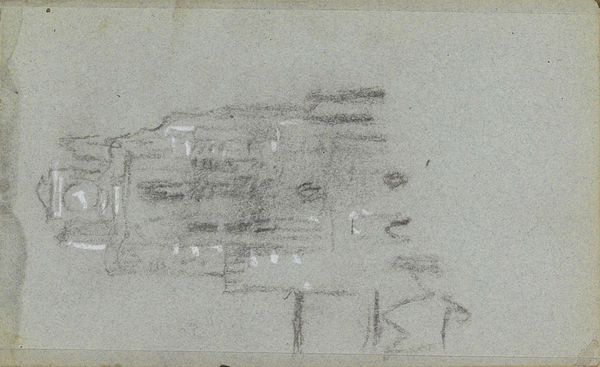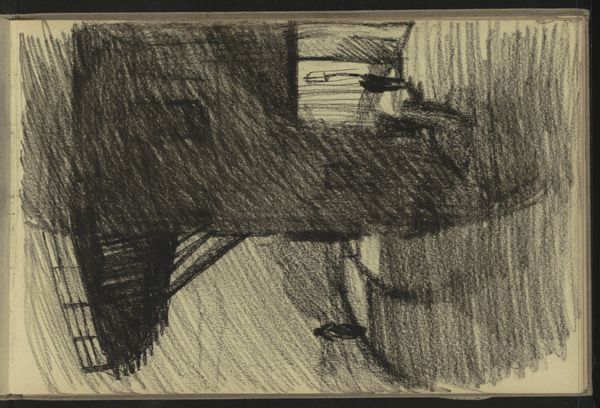
Dimensions: height 96 mm, width 158 mm
Copyright: Rijks Museum: Open Domain
Editor: We're looking at "Studie, mogelijk van een straat," or "Study, possibly of a street," by George Hendrik Breitner, created in 1909. It's a pencil drawing, and I find the quick, almost frantic lines quite evocative of a bustling cityscape. How would you interpret this work? Curator: The formal aspects of this drawing present a compelling case study in Breitner’s method. Note the radical abbreviation of forms; the buildings are rendered as a series of almost geometric shapes, established through swift, confident lines. Observe how the artist manipulates the density of these lines to suggest depth and shadow, implying spatial relationships within the composition. Editor: That makes sense. The density definitely gives it a sense of depth despite the lack of detail. Curator: Exactly. Consider also the overall composition. Breitner deliberately avoids a traditional, balanced arrangement. The focus is shifted towards the left side of the picture plane, creating a sense of dynamic movement and asymmetry. Editor: So, the imbalance is intentional? Curator: Precisely. This contributes to the drawing’s overall sense of immediacy and the feeling of capturing a fleeting moment, a key feature of his urban landscapes. What do you make of his choices? Editor: Seeing it this way, I realize that the asymmetry actually captures the unpredictable energy of a street scene far more effectively than a perfectly balanced composition ever could. Curator: Indeed. Through careful manipulation of line, form, and composition, Breitner delivers a powerful and affecting glimpse into early 20th-century urban life. This piece makes you consider how much can be said with the bare minimum of structural expression. Editor: Absolutely! This approach offers new insights into the beauty of city life through an efficient yet captivating composition.
Comments
No comments
Be the first to comment and join the conversation on the ultimate creative platform.
